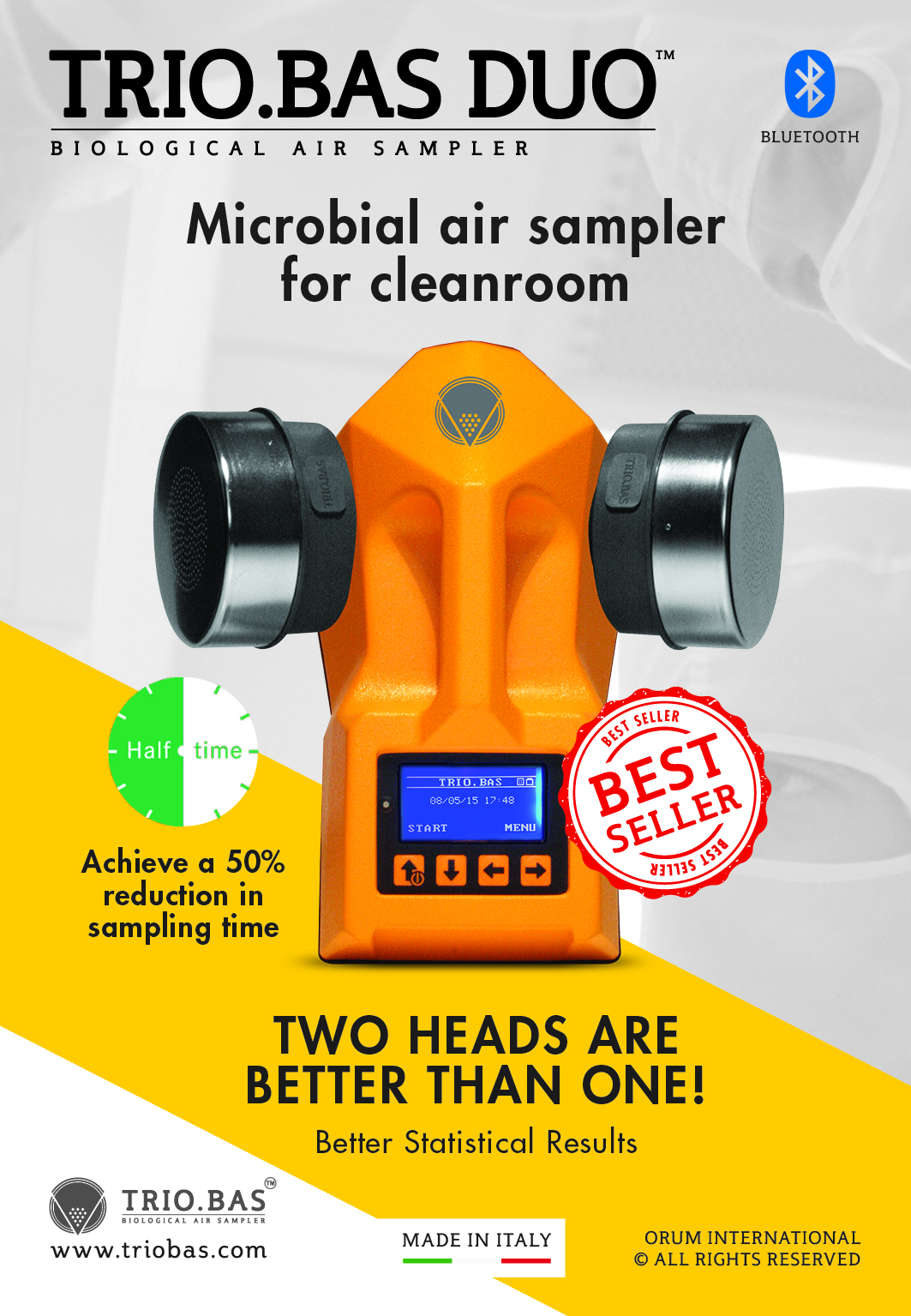New Encyclopedia of Rapid Microbiological Methods
Novel Technologies, Validation Strategies and Regulatory Acceptance are Highlighted in the New Encyclopedia of Rapid Microbiological Methods
One of the greatest contributions to the field of microbiology came from the kitchen. In 1881, scientist Walter Hesse was searching for a solid medium that could be used to cultivate bacteria. Unlike gelatin, the growth medium of choice at that time, the material had to be stable at high temperatures, allow a variety of microorganisms to be separated easily, and resist digestion or liquefaction by certain microbial species. Fanny Angelina, Hesse’s wife and laboratory assistant, had the answer: Agar Agar, a gelling agent that she used in her jellies and puddings. This simple kitchen ingredient revolutionized the science of microbiology, allowing the separation and culturing of microbes to become a routine procedure. Now, almost 125 years later, microbiology agar is the most important and widely used microbial growth medium available today. Fanny would be proud… but should we be proud as well?
Although the growth of microbial cells on agar surfaces provides the laboratory with critical information about the amount and the type of organisms that may be present in a sample under evaluation, the time to result is usually longer than what is desired. Days and even weeks may elapse before microbial colonies are visually detected, and in most cases, confluent growth prevents individual organisms from being isolated, necessitating sub-culture onto additional agar media, delaying the time to result even further. Additionally, many laboratories are discovering that microorganisms, when stressed due to nutrient deprivation, or following exposure to sub-lethal concentrations of antimicrobial agents, such as preservatives, disinfectants, heat or decontaminating gases, may not replicate when cultured on artificial media, because the environment is not truly optimal for the resuscitation and subsequent proliferation of organisms that may be present. For these and many other technical, quality and business reasons, the modern microbiological laboratory has been motivated toward developing innovative approaches for the detection, quantification and identification of microorganisms, and this includes the implementation of rapid microbiological methods.
The recently published Volume 4 of the Encyclopedia of Rapid Microbiological Methods is playing an important role in providing guidance for companies wishing to implement rapid methods as alternatives to conventional microbiological assays. Since the first three volumes were published in 2005, many new technologies that have been developed, validation and statistical strategies have improved, and most importantly, regulatory guidance and new policies have paved the way for an easier path to acceptance and implementation. The following is a brief overview of what is discussed:
- The application of modern microbial methods to the Quality Control testing of probiotics, including master and working cell banks, release and stability testing, viable cell counts, identification and strain typing, and absence of bacterial pathogens.
- Considerations when aligning a RMM with an end-user’s particular needs, such as the drivers for rapid methods, time savings, same day results, sample compatibility, automation, using a qualitative method as a screening tool, validation, identification, integration with LIMS and other data management platforms.
- Overview of rapid and automated microbial identification systems, including MALDI-TOF and SELDI-TOF mass spectrometry, FT-IR, elastic and inelastic light scattering, ribotyping, PCR, gene sequencing, microfluidics and microarrays.
- A case study for using MALDI-TOF mass spectrometry for the identification of microorganisms. Sample preparation, OQ, PQ, accuracy, precision, robustness and computer validation are discussed.
- A second case study on microbial identification focusing on genotypic methods, amplification of DNA, automation and validation (accuracy, precision, robustness and specificity).
- A novel case study of a new growth-based rapid microbiological method that detects the presence of specific organisms and provides an estimation of viable cell count. Data from the validation studies, inclusivity and exclusivity testing, and a comparison to USP <61> are provided.
- An end-user case study that describes an evaluation of a relatively new growth-based rapid method that utilizes a membrane filtration workflow coupled with a viability staining technique. A review of the technology and evaluation results are offered followed by a discussion of the system’s use for monitoring mammalian cell cultures.
- A comprehensive end-user evaluation using an optical spectroscopy technology for the real-time and continuous monitoring of airborne microorganisms in cleanroom and isolator environments.
- Validation and workflow of an ATP bioluminescence RMM for the release testing of both sterile (sterility testing) and non-sterile products (bioburden assessments).
- An end-user’s validation approach for a rapid, growth-based detection system as an alternate sterility test for cellular immunotherapy products.
- A case study by an end-user of a rapid, solid-phase cytometry technology. The validation strategy, use of statistical models, and considerations for stressed cells and sample matrix effects are offered.
- Understanding how to use statistics when validating an alternative sterility test, including probabilities and multiplicity, limit of detection and what is statistically “different” versus what is statistically “equivalent.” This is a must read for anyone wanting to validate a rapid sterility test and how to design the studies and use statistics to justify the results.
- The use of a novel qPCR-based system for the rapid detection of specific microorganisms.
- An end-user case study using a nucleic acid amplification platform for the detection of Mycoplasma. A review of regulatory requirements for nucleic acid amplification systems is also presented.
- An analysis of the science and workflow of a new nucleic acid amplification and microarray-based rapid method for the detection of Mycoplasma.
- An end-user’s overview of rapid viral detection methods. Experiences with Vesivirus, MVM and other public viral incidents are explored, as well as other topics associated with the future directions in using molecular methods for viral detection.
- A review of biopharmaceutical manufacturing, regulations, testing requirements and contamination events, and how the application of rapid methods fits in with the future of bioprocessing.
In addition to the chapters listed above, the new volume starts with an excellent introduction by FDA’s Dr. Bryan Riley, New Drug Microbiology Staff at the Center for Drug Evaluation and Research. Dr. Riley explains that modern approaches to process control (including Process Analytical Technology) require the availability of results in real-time (or at least close to real-time) to enable the operator to use the test results to make process decisions and adjustments. Furthermore, current rapid microbiological test methods are now able to start providing some of the advantages (from a process control and economic return standpoint) long enjoyed by our colleagues in the clinical and food microbiology labs. He concludes that pharmaceutical microbiologists would be well served by considering which of their samples would provide a benefit with a more rapid result and then assessing the current alternate microbiological methods to see if any of them are a good fit for their needs.
Volume 4 of the Encyclopedia of Rapid Microbiological Methods provides new insights, validation and implementation guidance, and most importantly, encouragement for the pharmaceutical industry to embrace the next generation of microbiology testing platforms and strategies.
- Volume 4 may be obtained through the PDA at https://store.pda.org/ProductCatalog/Product.aspx?ID=1899.
- Volumes 1-3 may be accessed at https://store.pda.org/ProductCatalog/Product.aspx?ID=513.
By Michael J. Miller, Ph.D.
President, Microbiology Consultants, LLC and Owner of rapidmicromethods.com
http://visit.microbiologics.com/l/8752/2013-07-24/dbjn3

















